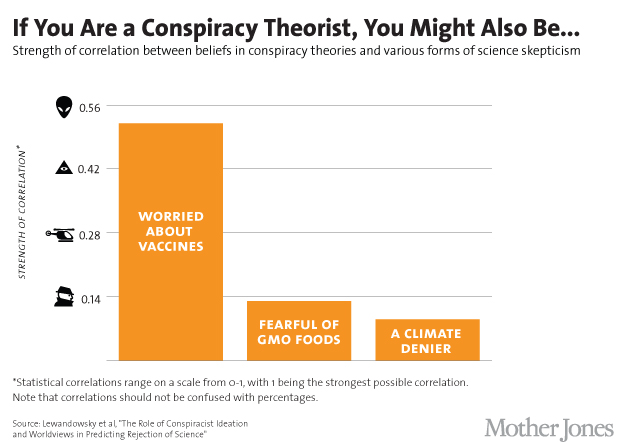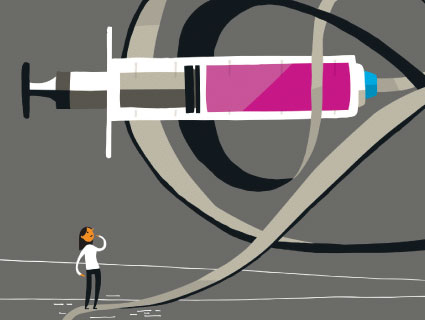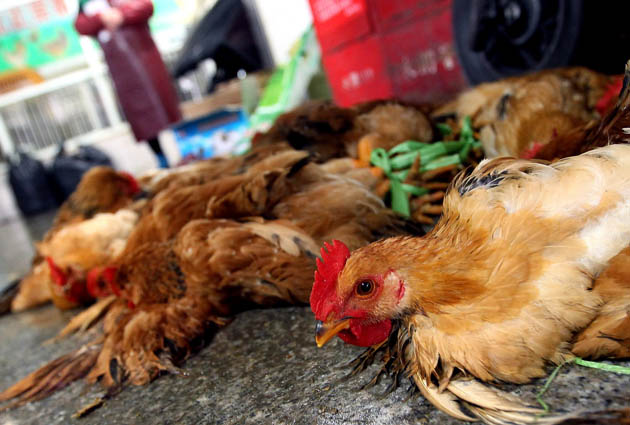You’ve probably heard by now that this year’s flu season is a bad one. Below is a guide to the viruses that are going around now, plus a refresher on flu basics.
Is the flu widespread where I live?
Probably:
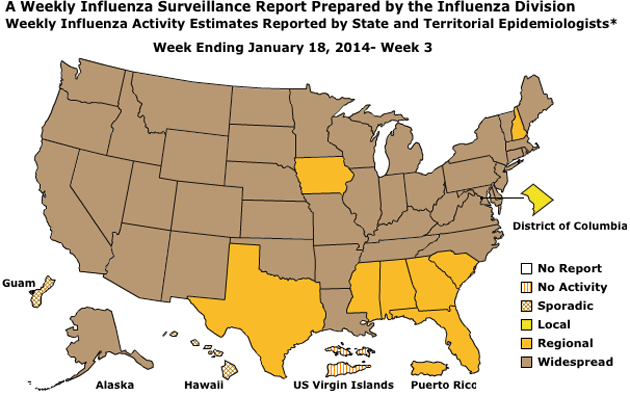
How many people have died so far this year?
Twenty-eight children have died so far. The Centers for Disease Control and Prevention does not keep track of adult deaths. That’s because states are not required to report flu deaths to the CDC. Older adults often die of flu complications or secondary infections rather than the flu itself, so tracking flu deaths is not an exact science. That said, in California, the death toll is currently at 146, including 95 people under the age of 65. At this time last year, just 9 Californians under 65 had died of the flu, and by the end of the season, a total of 106 people had died.
How does this year’s season compare to last year’s?
As the chart below shows, so far, this season is milder in terms of number of cases. However, CDC spokesperson Jason McDonald notes that more people between the ages of 18 and 64 have been hospitalized for flulike symptoms this year than in previous years. This season’s predominant virus strain is H1N1—which, when it originated in 2009, also sent an unusually high number people in the 18-to-64 age range to the hospital. Epidemiologists don’t know why H1N1 hits younger people hard, but one theory, says McDonald, is that older adults have built up more immunity to it. H1N1 is similar to the virus that caused the Spanish Flu of 1918, and also to strains that circulated in the ’60s and ’70s. Another possible factor: Only about 30 percent of younger adults get flu shots, compared to about 40 percent of older adults.
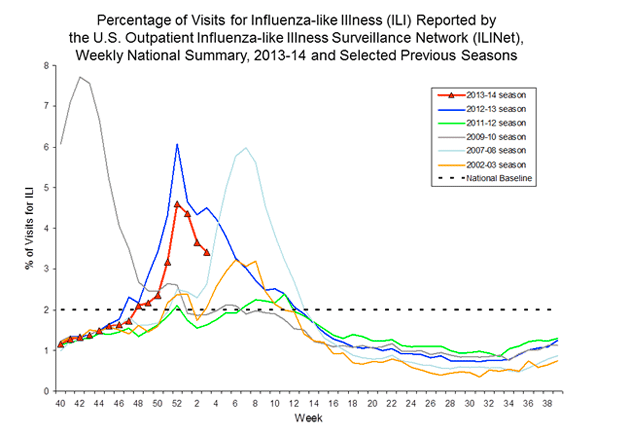
Is there a cure for the flu?
Doctors sometimes use antiviral medications to treat the flu—but it’s worth noting that, according to McDonald, about 1 percent of the H1N1 strains that the CDC has tested are resistant to a common antiviral drug. Although over-the-counter medications can make flu symptoms less severe, a recent study found that fever reducers like ibuprofen and acetaminophen actually help spread the flu by making people feel well enough to leave the house before they’ve kicked the virus.
How do I even know I have the flu? How can my doctor tell?
To know for certain, you’d need to have a blood test. But most doctors won’t do that, since it won’t really change the treatment (rest, drink fluids). But there are some key differences between a bad cold and a flu, CDC spokesman Curtis Allen told me last flu season. “You will be running a high temperature for several days, and it will keep you in bed for a week or more,” he said. But the most distinctive feature of the flu is its sudden onset. “You could be feeling fine at 10 and very sick at noon.”
If the flu season has peaked, should I still get a flu shot?
Yes. A typical flu season is 10 to 12 weeks long—so if it just peaked, that means there’s still another 5 or 6 weeks left. The caveat: The shot takes about two weeks to kick in, so even if you got the shot today, you could still come down with the flu, said Allen. Even if you think you’ve already had the flu this year, you should get a shot; it’s possible (though unlikely) that you could still come down with a different strain.
Can you get the flu from the flu shot itself?
No. That’s impossible, since the virus in the shot is not alive. You might get soreness, irritation, or even a fever after the shot, but that’s your body reacting to the shot, not the flu.
Why is there a “season” for the flu?
Last flu season, Jeffrey Shaman, a flu researcher and assistant professor in the department of environmental health sciences at Columbia University’s Mailman School of Public Health, told me that there are several reasons. Some have to do with us humans: In the winter, we spend more time indoors sneezing on each other. During this time of short days and long nights, we don’t get as much vitamin D or melatonin—both thought to be essential for healthy immune system function. Then there’s the virus itself: It seems to thrive when absolute humidity is low, a common condition in cold winter weather.
So that’s why the flu is so bad this year—the drought! So climate change actually made the flu worse, right?
Wouldn’t it be nice if epidemiology were that easy? Unfortunately, it’s not. If that were the case, you’d never see the flu in hot, humid places. Other variables make it impossible to predict flu seasons based on weather alone.
It’s worth noting, though, that in a 2012 paper, Shaman and his colleagues did document that each of the four flu pandemics of the 20th century were preceded by La Niña cycles, likely because birds mingled with each other differently during these unusual weather patterns. The flu strains that they were carrying probably hybridized and created a strain so new that humans had no immunity to it. Since, as we recently learned from this Climate Desk video, climate change does interact with El Niño/La Niña cycles, it’s not completely out of the question that global warming could affect flu transmission, at least indirectly.

